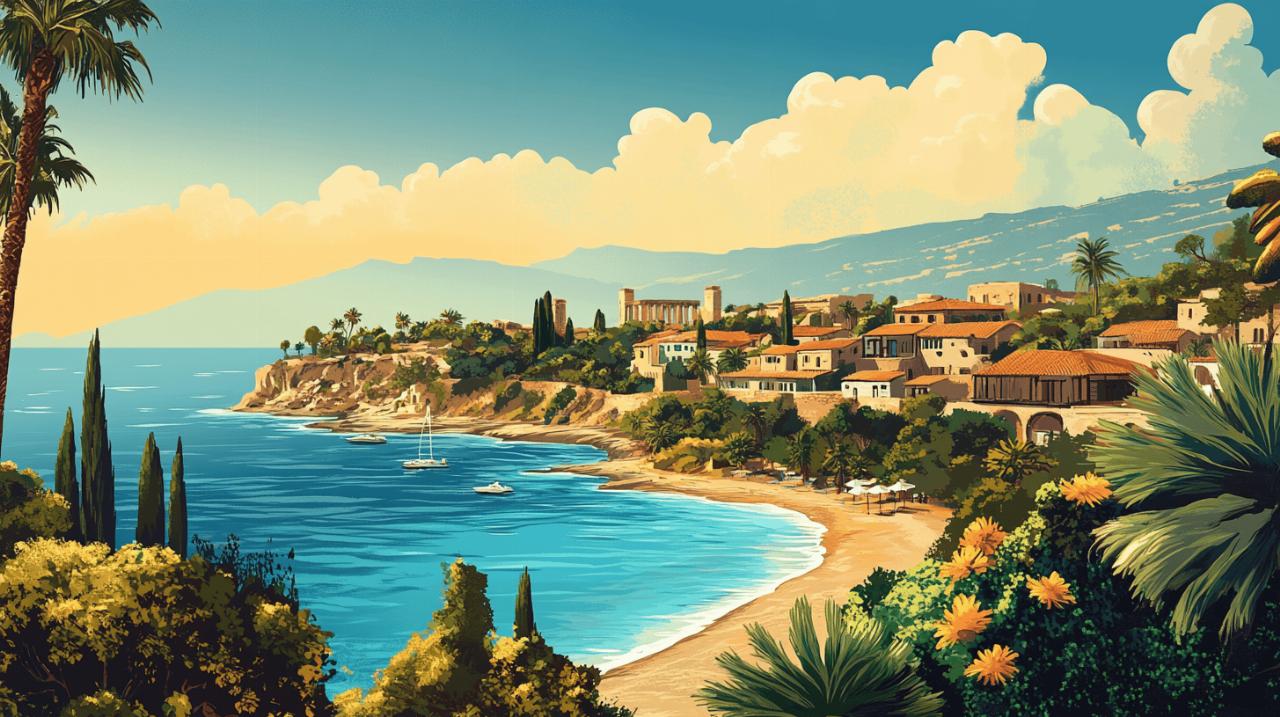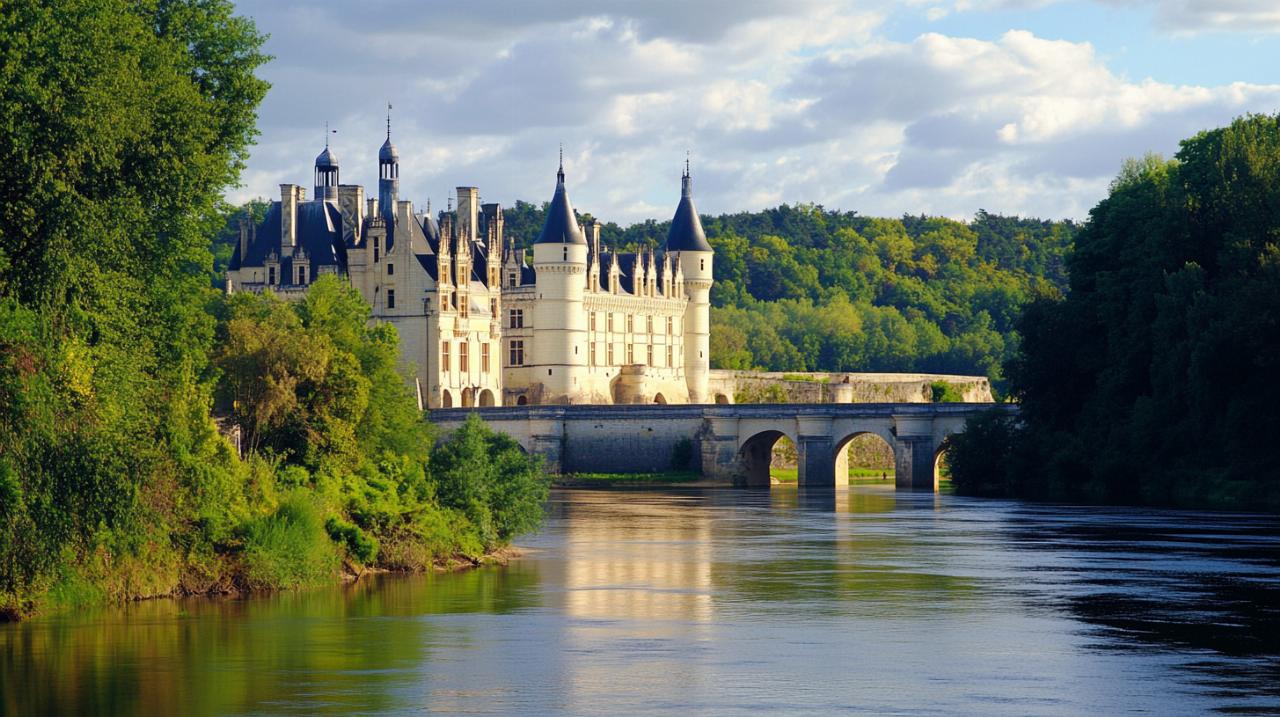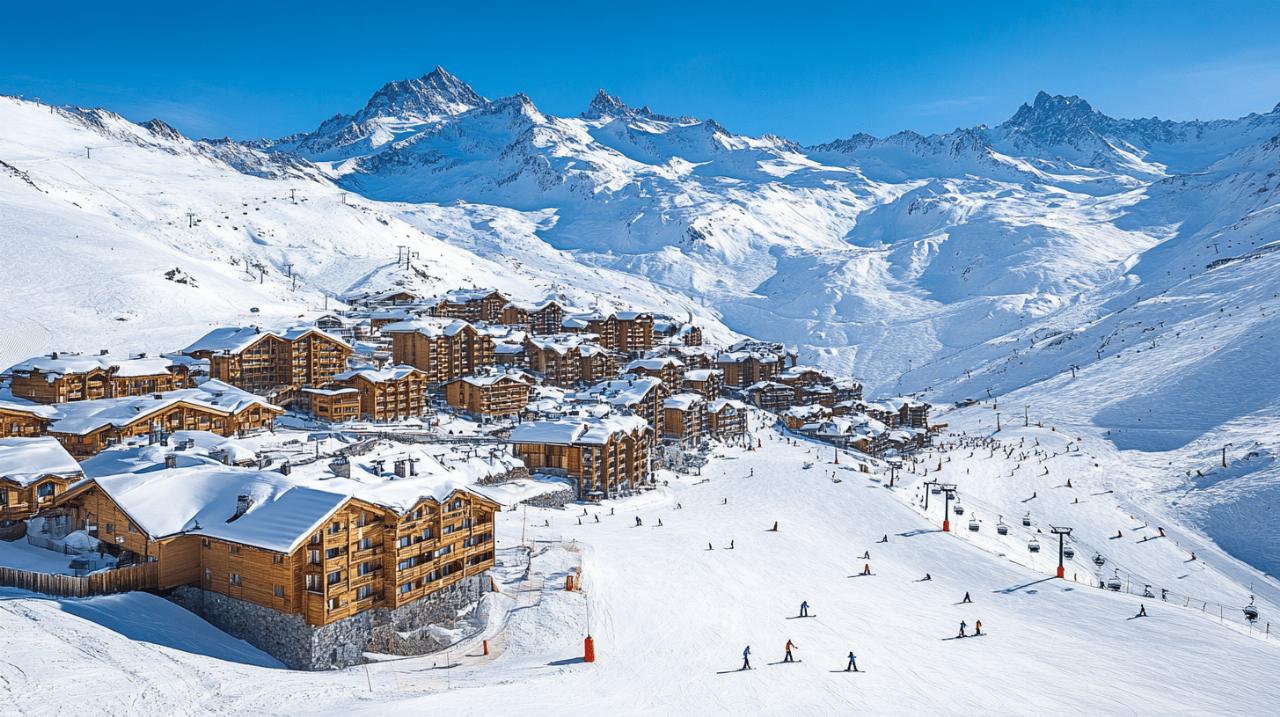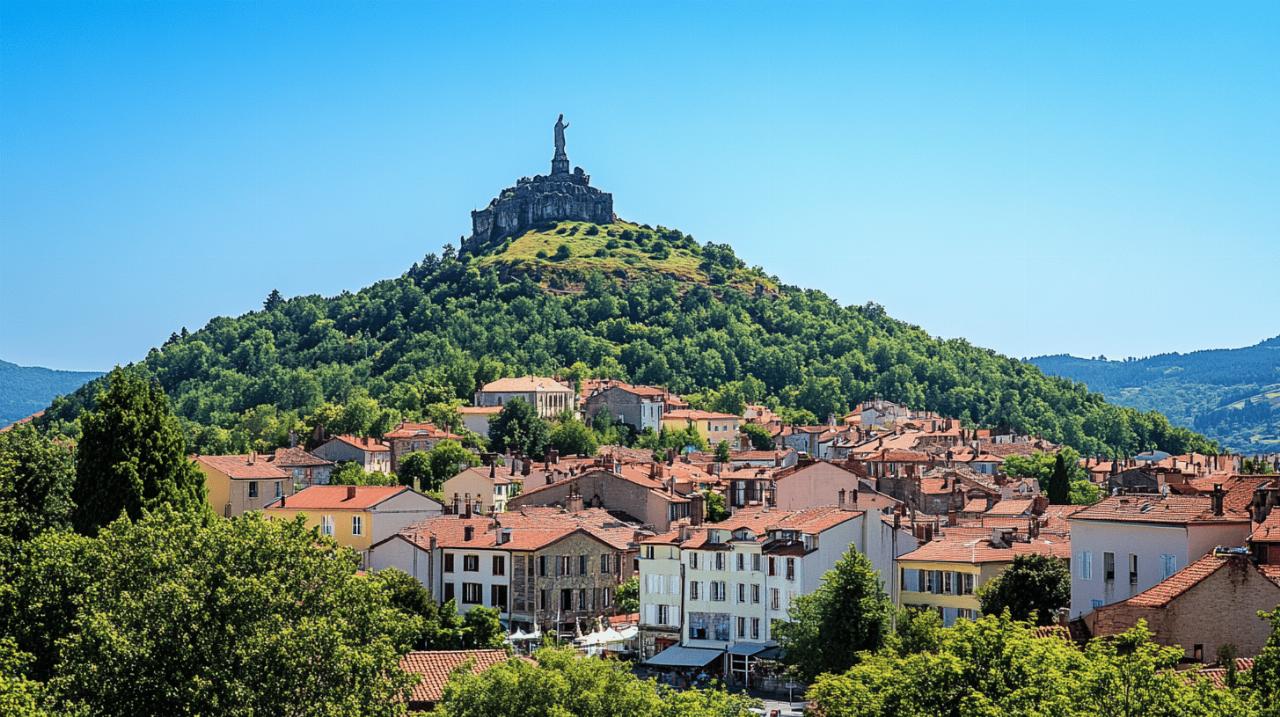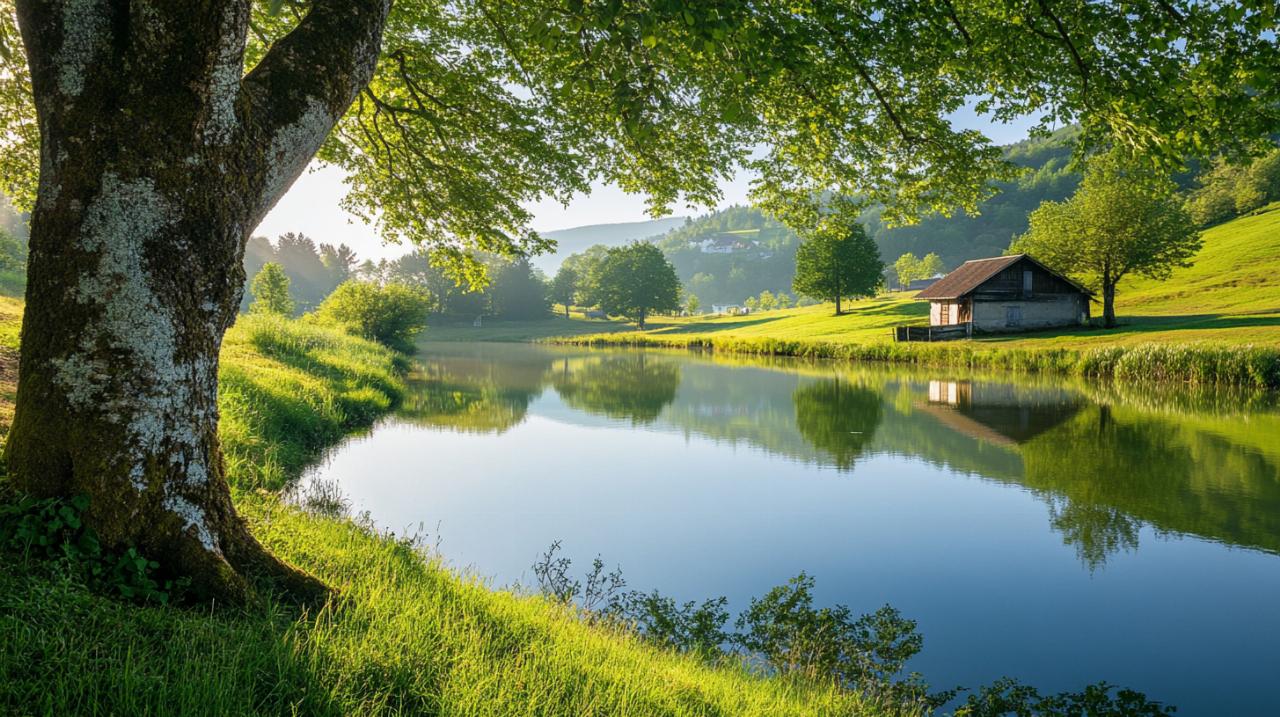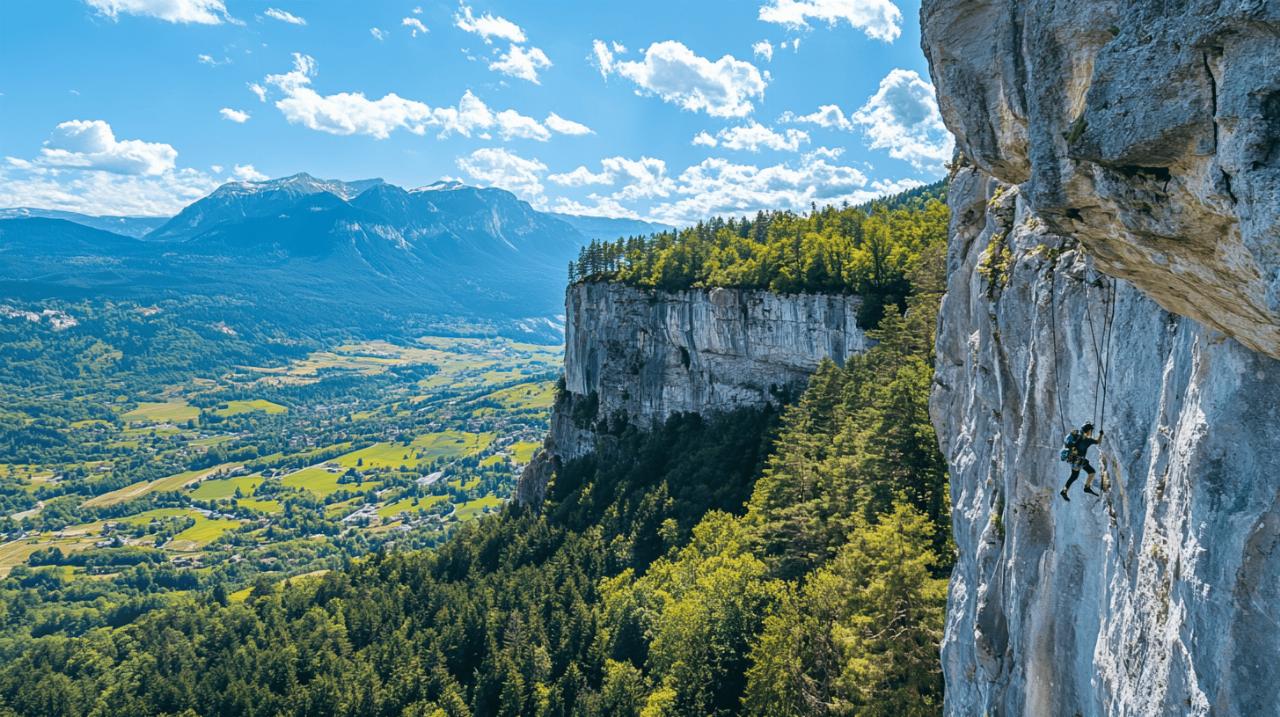Nestled within the shadow of Europe's highest peak, the Curalla via ferrata in Passy offers adventurers an exhilarating introduction to alpine climbing. This protected climbing route combines the thrill of vertical ascent with the security of fixed steel cables, allowing those with moderate fitness levels to experience the raw beauty of the Mont Blanc massif from a truly unique perspective. Whether you're seeking an adrenaline rush or simply wish to immerse yourself in the grandeur of the French Alps, the Curalla route provides an unforgettable journey across limestone cliffs with spectacular panoramic vistas stretching across the valley below.
Understanding via ferrata: an introduction to protected alpine routes
What Makes a Via Ferrata Different from Traditional Climbing
A via ferrata, which translates from Italian as 'iron path', represents a distinctive approach to mountain climbing that bridges the gap between hiking and technical rock climbing. Unlike traditional climbing where participants must secure their own protection points, a via ferrata features permanent steel cables anchored into the rock face, supplemented by metal rungs, ladders, and occasionally suspended bridges. This infrastructure allows climbers to progress along challenging vertical terrain whilst remaining continuously connected to the fixed cables through a specialised lanyard system. The beauty of this approach lies in its accessibility, as it opens up dramatic alpine landscapes to individuals who may not possess extensive mountaineering experience but maintain a reasonable level of physical fitness and confidence at height.
The Curalla route exemplifies this philosophy perfectly, offering a balanced blend of hiking and climbing across a limestone cliff that sits below the impressive Aiguille du Varan, which towers at two thousand five hundred and forty-four metres. The path itself stretches five hundred metres in length, incorporating thrilling monkey bridges and footbridges that provide both excitement and stunning views across the valley towards Mont Blanc. What distinguishes this particular route is its intermediate difficulty rating, making it unsuitable for complete beginners whilst remaining achievable for those with prior outdoor experience and a head for heights. The route's exposure and technical sections demand respect, but the permanent protection system ensures that participants can focus on the experience rather than complex rope work.
Essential Kit and Safety Equipment for Your Curalla Adventure
Proper equipment forms the foundation of a safe and enjoyable via ferrata experience. The essential safety kit comprises three critical components: a climbing harness that fits securely around the waist and legs, a helmet to protect against falling rocks or accidental impacts, and a via ferrata lanyard equipped with energy absorbers. This specialised lanyard features two arms, each terminating in a carabiner that clips onto the fixed cable, allowing climbers to move one attachment point at a time, ensuring continuous connection to the protection system. Fortunately, those without their own equipment need not worry, as full kit rental is available locally for ten euros per person, making the activity accessible to visitors without requiring significant investment in specialised gear.
Beyond the safety essentials, participants should come prepared with appropriate clothing and provisions for a mountain environment. A minimum of one litre of water is essential, along with energy-rich snacks to maintain strength throughout the climb. Sun protection proves crucial at altitude, so sunscreen, a hat, and sunglasses should all find space in your rucksack. A warm sweater is advisable, as temperatures can drop unexpectedly in the mountains, particularly if weather conditions change. Comfortable walking boots with good ankle support and grip are strongly recommended, as the approach walk and descent follow mountain paths that may be uneven or steep in places. With the right preparation, climbers can focus entirely on enjoying the extraordinary experience that awaits them on the rock face.
Conquering the Curalla: What to Expect on This Moderate Alpine Route
Route Difficulty and Physical Requirements for Success
The Curalla via ferrata carries an intermediate difficulty rating, requiring participants to possess both physical fitness and mental preparedness for exposed climbing. This classification means the route is not designed for those taking their first steps in outdoor adventure, but rather for individuals who already have some experience with physical activities at height. The minimum height requirement stands at one metre fifty centimetres, with a minimum age of twelve years, ensuring that younger participants possess sufficient reach and strength to manage the climbing sections safely. The elevation gain of one hundred and eighty metres, combined with the technical nature of the route, demands sustained effort over the course of the climb, though the rewards of reaching each new vantage point provide powerful motivation to continue.
The complete experience typically unfolds over one and a half to two hours on the via ferrata itself, though this forms only part of the overall time commitment. The adventure begins at the Curalla car park, situated at an altitude of one thousand and sixty metres, from where a twenty-minute approach walk leads to the start of the climbing route at one thousand two hundred and fifty metres. The via ferrata then ascends to a finishing altitude of one thousand four hundred and twenty metres, before participants follow a descent path that takes approximately forty-five minutes to return to the starting point. When combined with the approach and descent, the total time commitment extends to roughly three to four hours, making this a substantial half-day activity that requires adequate time allocation in your itinerary.
Spectacular features and panoramic mont blanc vistas
What truly distinguishes the Curalla via ferrata is its exceptional positioning, reportedly offering the only route of its kind that directly faces Mont Blanc. This orientation means that throughout the climb, participants are treated to uninterrupted views across the valley to Europe's highest summit and the surrounding peaks of the massif. The exposure is considerable, with climbers traversing the face of a limestone cliff that provides both the challenge of vertical movement and the reward of increasingly expansive vistas with each metre gained. The sensation of height is palpable, particularly when crossing the suspended monkey bridges and footbridges that form some of the route's most memorable sections.
These aerial walkways demand concentration and nerve, as they swing slightly underfoot whilst offering unobstructed views of the drop below. However, the fixed cables and continuous protection mean that whilst the exposure feels dramatic, the actual risk remains minimal for those following proper procedures. The limestone rock itself provides excellent friction, and the combination of natural handholds and artificial aids creates a varied climbing experience that maintains interest throughout. As climbers progress higher, the perspective shifts, revealing new angles on familiar peaks and valley features, transforming the landscape into an ever-changing three-dimensional panorama that justifies every moment of effort expended in reaching these elevated viewpoints.
Practical Information: Access, Logistics and Getting to Curalla
Parking facilities and starting point directions
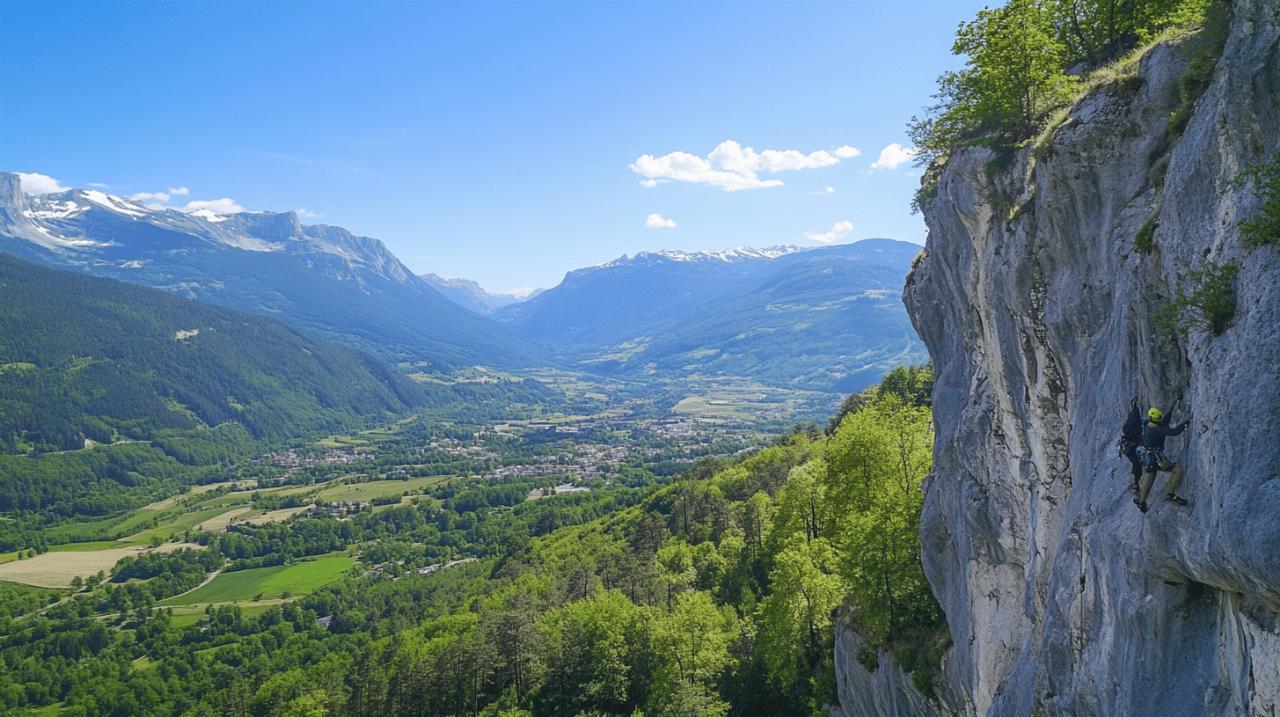 Reaching the Curalla via ferrata starting point is straightforward, with the route located approximately thirty minutes by car from Chamonix and just six kilometres from Sallanches. The designated parking area sits at Parking de Curalla, accessed via 332 chemin de Curalla in Passy. This convenient location within the wider Sallanches commune places the via ferrata within easy reach of the major alpine towns and transport hubs, making it an accessible day trip for those staying anywhere in the Mont Blanc region. The recent reopening of the Égratz viaduct has further improved connectivity, restoring the direct route to Chamonix that had been temporarily disrupted by rockfall concerns.
Reaching the Curalla via ferrata starting point is straightforward, with the route located approximately thirty minutes by car from Chamonix and just six kilometres from Sallanches. The designated parking area sits at Parking de Curalla, accessed via 332 chemin de Curalla in Passy. This convenient location within the wider Sallanches commune places the via ferrata within easy reach of the major alpine towns and transport hubs, making it an accessible day trip for those staying anywhere in the Mont Blanc region. The recent reopening of the Égratz viaduct has further improved connectivity, restoring the direct route to Chamonix that had been temporarily disrupted by rockfall concerns.
From the car park, clear signage guides visitors along the approach path, which winds uphill through alpine meadows and woodland for approximately twenty minutes before reaching the base of the cliff where the via ferrata begins. This walk serves as an excellent warm-up, allowing muscles to activate and participants to mentally prepare for the climbing ahead. The path is well-maintained and suitable for anyone with basic hill-walking fitness, though the gradient does require a steady pace. Upon arrival at the cliff base, the fixed cables and starting point are clearly visible, with additional safety information typically displayed on signboards at this location.
Descent Route and Estimated Duration for the Complete Journey
Upon completing the via ferrata section, climbers should not assume their adventure is finished, as the descent forms an integral part of the overall experience. The return route follows a well-marked mountain path that descends gradually back towards the car park over approximately forty-five minutes. This walking descent allows participants to reflect on their achievement whilst their heart rates return to normal, and provides opportunities to appreciate the surrounding landscape from a different perspective. The path is generally straightforward, though care should be taken on any loose or steep sections, particularly if the ground is wet or if fatigue is beginning to set in after the exertions on the cliff face.
When planning your day, it is wise to allocate a total of four hours from arrival at the car park to return, encompassing the approach walk, the via ferrata itself, and the descent. Early morning sessions, such as those beginning at half past eight, offer the advantage of cooler temperatures and typically calmer weather conditions, both of which enhance the climbing experience. Guided sessions through the Sallanches Guides Office are available daily throughout most of the year, with the route accessible from January through to early December, though seasonal conditions may affect specific operating dates. These guided options prove particularly valuable for those new to via ferrata, as experienced mountain professionals can provide instruction, encouragement, and additional safety oversight throughout the journey.
Maximising Your Alpine Experience: Passy and the Surrounding Region
Local Attractions and Activities in Passy Town Centre
Beyond the thrills of the via ferrata, Passy itself offers a wealth of attractions that complement an active mountain holiday. The town sits within the embrace of the Mont Blanc massif, providing a more tranquil base than the bustling resort centres whilst maintaining excellent access to alpine adventures. The local tourist office serves as an invaluable resource for planning additional activities, offering information on everything from gentle valley walks to more demanding mountain excursions. For those seeking relaxation after their climbing exploits, the thermal park provides soothing waters and wellness facilities, allowing tired muscles to recover whilst still enjoying mountain views.
Water-based activities feature prominently in the local offerings, with a refreshing lake providing swimming opportunities during warmer months, whilst the nearby rivers host rafting expeditions for those whose appetite for adrenaline remains unsatisfied. The town's selection of restaurants and bars caters to various tastes and budgets, from traditional Savoyard cuisine featuring local cheeses and charcuterie to international options and casual dining. Accommodation options span hotels, chalets, and rental properties, with choices to suit different group sizes and comfort preferences. The broader Chamonix valley infrastructure ensures that essential services such as ski hire, lift passes, and airport transfers remain readily accessible, despite Passy's quieter character.
Nearby Destinations Including Plateau d'Assy and Refuge du Varan
The surrounding region rewards exploration, with several notable destinations lying within easy reach of Passy. The Plateau d'Assy stands out for its remarkable modern church, whose architecture and artwork have earned it international recognition, alongside panoramic views that sweep across the valley towards Mont Blanc. This elevated location also provides access to additional walking routes and winter sports facilities, making it worthy of a visit regardless of season. Plaine Joux offers further opportunities for outdoor pursuits, whilst Le Palais presents options for ice skating and indoor entertainment, useful alternatives if weather conditions in the mountains prove unfavourable.
For those seeking an authentic mountain refuge experience, the Refuge du Varan represents an ideal destination. This traditional alpine hut offers hearty meals and spectacular views, embodying the spirit of mountain hospitality that has welcomed climbers and hikers for generations. Whether visited for lunch after completing the via ferrata or as the focus of a separate excursion, the refuge provides an atmospheric setting where the pace of modern life feels wonderfully distant. The nearby town of Saint-Gervais-les-Bains adds yet another dimension to the regional offerings, with its thermal spas and additional mountain access points. Throughout the year, the valley hosts various events including the Mont Blanc Marathon in June, the prestigious UTMB trail running race in August, and cultural festivals such as Unlimited Festival, Musilac Mont Blanc, and Cosmo Jazz Festival, ensuring that visitors can combine outdoor adventure with cultural engagement. This rich tapestry of activities and attractions ensures that a visit centred on the Curalla via ferrata can easily extend into a comprehensive alpine holiday, with sufficient variety to satisfy diverse interests and energy levels within any group.

